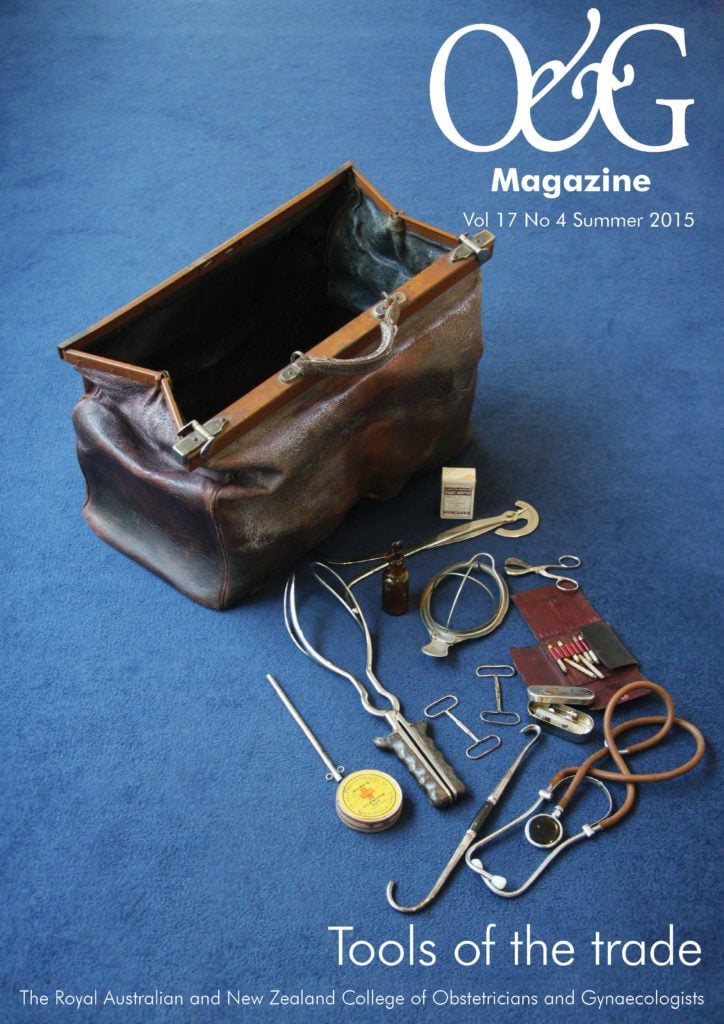Had time to read the latest journals? Catch up on some recent O and G research by reading these mini-reviews by Dr Brett Daniels.
Route of hysterectomy
Each year 30 000 Australian women have a hysterectomy. The method of hysterectomy may be abdominal, first performed successfully in 1853; vaginal, which as an emergency postpartum procedure dates from at least the writings of Soranus in AD 120, and as a planned procedure from 1801; laparoscopic, first performed in 1988; or robotic, first performed in 2005. While choice of route of surgery for a particular woman may depend on a number of clinical factors and resource availability, there appear to be definite trends in the type of hysterectomy performed in the past ten years. Loring et al1 report their experience of hysterectomy in a 300-bed academic community hospital with 42 general gynaecologists and two full-time minimally invasive gynaecologists. They do not perform robotic gynaecological surgery. In 2004, only 24 (eight per cent) of the 292 hysterectomies performed for benign conditions at the hospital were laparoscopic. The rate increased to more than 50 per cent (189/365) by 2008, and, in 2012, 72 per cent (316/439) of hysterectomies were performed via a traditional laparoscopic approach. Furthermore, in 2012, 85 per cent (293/344) of laparoscopic hysterectomies at the hospital were performed on an outpatient basis, that is with discharge on the day of surgery. The increase in laparoscopic hysterectomies was mirrored by a decrease in abdominal hysterectomies, while the rate of vaginal and laparoscopically assisted vaginal hysterectomy remained relatively stable over the study period. While this is a US study, the large increase in laparoscopic hysterectomy no doubt reflects the experiences of many gynaecologists in Australia and New Zealand.
- Loring M, Morris SN, Isaacson KB. 2015. Minimally invasive specialists and rates of laparoscopic hysterectomy. Journal of the Society of Laparoendoscopic Surgeons 19, DOI: 10.4293/JSLS.2014.00221.
Childhood outcomes after caesarean
This study1 uses data from the Longitudinal Study of Australian Children (LSAC) to examine the health and developmental outcomes of more than 5000 children born by caesarean section in Australia in 2003 and 2004. Outcome measures included: global health, asthma, BMI, use of prescribed medication, general development, medical conditions and/or disabilities, special healthcare needs and socio-emotional development including temperament, social development, mental health and quality of life. Outcomes were measured at five assessments across the seven-year study period. Overall, 28.2 per cent of the babies in the study were delivered by cesarean section. Children born by cesarean delivery were more commonly preterm, low birthweight, and were more likely to require intensive care or ventilator support. Despite the large number of outcome measures in this study, there were relatively few significant differences between the children born by caesarean section and those born vaginally. Children born by caesarean delivery were more likely to have a medical condition at two to three years of age, use prescribed medication at six to seven years, and have a higher BMI at eight to nine years, although this last effect was mediated by maternal obesity. Parent-reported quality of life for children born by cesarean delivery was lower at eight to nine years, but not at younger ages. However, caesarean delivery was also associated with better parent-reported global health at two to three years and prosocial skills at age six to seven years. It appears that differences were not consistently maintained across the study period and that this makes interpretation of these data difficult. It does not seem that caesarean section confers a global cost or benefit to health and wellbeing in childhood.
- Robson SR, Vally H, Abdel-Latif ME et al. 2015. Childhood Health and Developmental Outcomes After Cesarean Birth in an Australian Cohort. Paediatrics, 136, doi: 10.1542/peds.2015-1400.
Lifestyle intervention in PCOS
Polycystic ovarian syndrome (PCOS) is a common cause of anovulation and female infertility. While weight loss and lifestyle interventions are often recommended to women in an attempt to improve their fertility, there are few randomised trials of the effect of the intervention on fertility. This trial1 randomised 149 women with infertility owing to PCOS into three groups to receive 16 weeks of the oral contraceptive pill (OCP); lifestyle modification consisting of a calorie-restricted diet with meal replacements plus weight loss medication plus increased physical activity; or a combination of the OCP and the lifestyle intervention. Following the 16 week preconception phase, women received four cycles of clomiphene ovulation induction and timed intercourse. The authors report that there was a significantly higher rate of ovulation in the combination compared to the OCP group. Live birth rates during the study were 12 per cent for the OCP group, 26 per cent for the lifestyle group and 24 per cent for the combination group. However, these were not statistically significant differences. The aim of this study to perform a randomised controlled trial of preconception lifestyle modification in PCOS was sound; however, the impression seems to be that the study was underpowered given the hypotheses in question.
- Legro RS, Dodson WC, Kris-Etherton PM et al. 2015. Randomized Controlled Trial of Preconception Interventions in Infertile Women With Polycystic Ovary Syndrome. J Clin Endocrinol Metab 100, doi: 10.1210/jc.2015-2778.






Leave a Reply